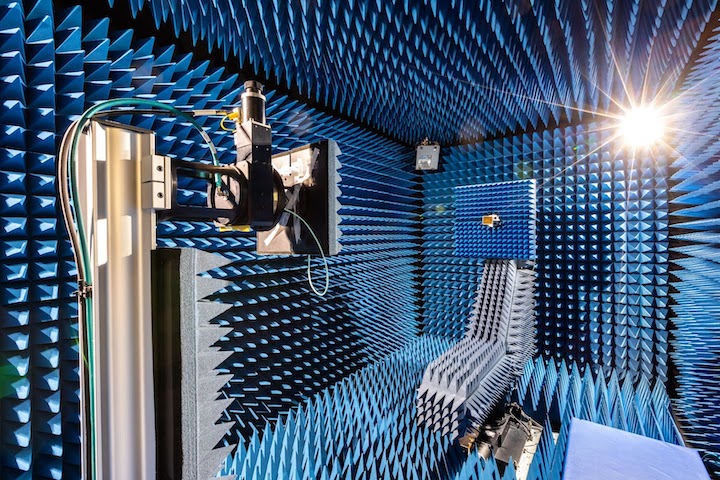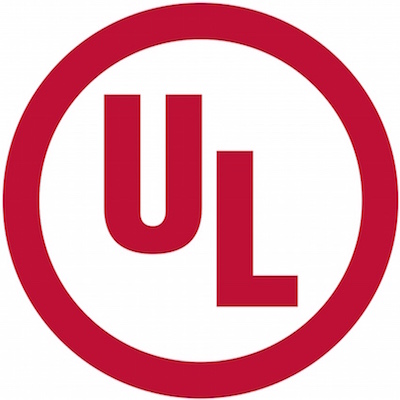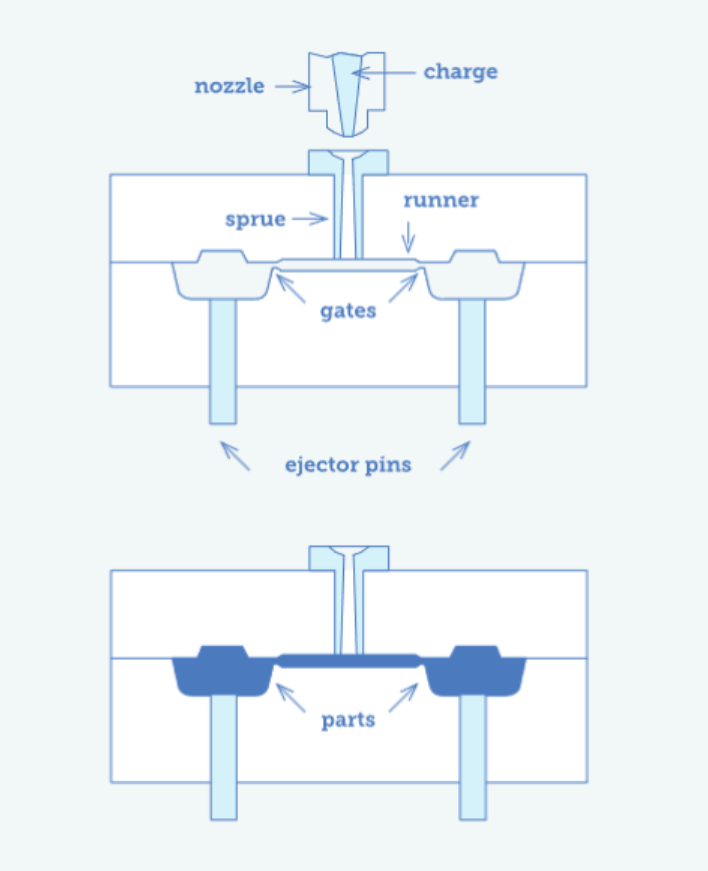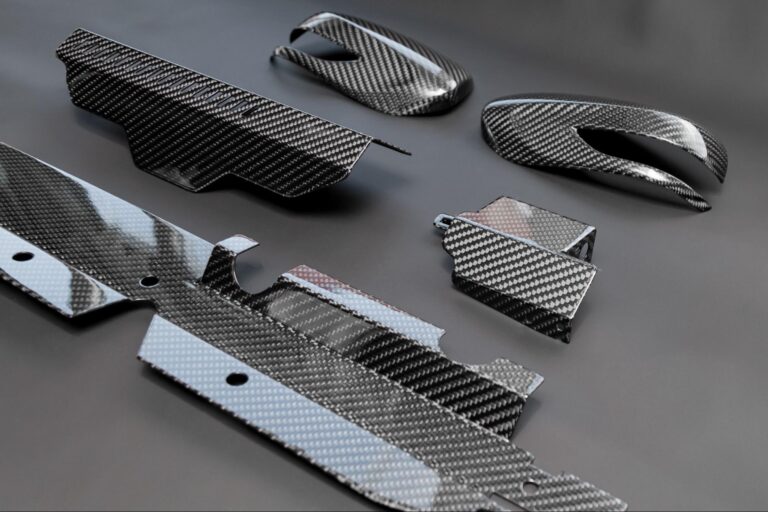Time to read: 10 min
You and your team have a killer consumer electronics product idea and the necessary skill set to bring it to market. But 50% of consumer electronics products fail EMC testing during their first pass. A failure in certification testing can stop your product development process dead in its tracks, resulting in large costs and significant delays in releasing your product.
Now, all consumer electronics that oscillate at a frequency of 9 kHz or higher must comply with FCC regulations to prevent these products from interfering with radio services which operate within a band of 9 kHz to 3,000 GHz. If a product typically operates below 9 kHz, it’s still important to ensure that its harmonics do not exceed 9 kHz.
Interference can cause any number of unexpected problems with wireless communication systems and so must be tightly controlled. This article explains how to comply with consumer electronics certification and regulation so you can understanding the process and prevent your consumer electronics from failing your first regulation test. In most cases, test failures (which increase testing costs) are caused by an inadequate understanding of the requirements.
This guide will help you avoid or mitigate the impact of consumer electronics testing failures, and get your product into the hands of your customers as quickly and seamlessly as possible.
FCC Certification Process
The Federal Communications Commission (FCC) requires that electronics meet certain standards to be marketed and sold in the United States. Consumer electronics are considered Class B products and are therefore subjected to more stringent requirements. Class A products are intended for industrial use and have less stringent requirements.

Types of Testing
The FCC consumer electronics certification and regulation processes are composed primarily of two major sets of technical testing requirements, namely EMC (electromagnetic compatibility) testing and RF (radio frequency) testing.
EMC Testing
EMC testing measures the strength of the electromagnetic fields that your product generates to see if it falls within limits set by the FCC. The requirements for different products vary, but you can determine applicable requirements by combing through regulatory documents. The simplest way to assess the requirements is to engage with FCC-accredited test labs and leverage their expertise.
A comprehensive list of test labs can be found here. To get timely and helpful feedback from test labs, you’ll want a signed NDA, so be ready to provide a breakdown of where you plan to sell your product and its expected use cases. The test lab representative can help you determine market and product-specific requirements.
It’s worth noting that some products are exempt from EMC testing, though these exemptions aren’t typically within the realm of consumer electronics. The Code of Federal Regulations, Title 47, Part 15 (47 CFR 15), Section 15.103 spells out the exempt devices, but the FCC still strongly recommends that all products meet the technical requirements of EMC testing. Regardless, the FCC can still stop the sale of your exempt product if it’s shown to produce harmful electromagnetic interference.
RF Testing
RF testing measures the intentionally generated electromagnetic fields from within the radio frequency portion of the electromagnetic spectrum that your product generates. These are generated from the RF transmitter (e.g., a Bluetooth or Wi-Fi module) in your product. However, requirements for RF, like channel allocation and emissions bandwidth, vary based on the end use of your product.
To determine which transmission frequencies are appropriate for your product and target market, consider speaking with accredited test labs. The RF transmitter in your product will either take the form of a pre-certified module (i.e., a separately printed circuit board subassembly that can transmit and receive RF energy), which has already been tested and approved, or your own RF module designed from scratch.
Pre-certified modules can significantly cut down on the required design effort, testing costs, and testing timeline — but they have a much higher cost per unit when compared to a module designed from scratch (roughly $10 to $50 per unit for a pre-certified module, compared to $4 to $10 for your module). Additionally, you’ll be dependent on an OEM’s supply and support of that module.
If you design your own RF module up front, the same module can be used as a pre-certified module in later products you develop. This allows you to realize the benefits of lower testing costs and reduced time to test, while still having a lower cost per unit.
FCC Certification Cost and Timeline
With the experience and advice of accredited test labs, you should be able to minimize risk and de-mystify the EMC and RF requirements of your product. But beyond the technical requirements, there are still questions that may have huge implications on your product development life cycle: What is the FCC certification cost for testing, and how long does it take to test?
To answer these questions, first identify whether your product is considered an intentional or unintentional radiator as described below:
- Unintentional Radiator: A device that doesn’t use a wireless transmitter at all. Every electronic device has some level of electromagnetic emissions. Unintentional radiators have their required authorization path spelled out in Subpart B of Section 15.101 of 47 CFR 15,
- Intentional Radiator: The device emits a wireless signal like Bluetooth, cellular, or Wi-Fi. Intentional radiators most often fall under the certification authorization requirement (with some exceptions being carrier current systems and AM transmission systems used in educational systems). Testing is performed in an anechoic chamber, (see figure below), which is designed specifically for isolating the EM radiation emissions from your product. These rooms are very expensive to rent – up to $1,000 per hour.

In addition to the above requirements, an AC-powered device – either powered directly from the mains or if the AC power is converted to DC – must be designed to meet conducted emissions requirements. These can be easily overcome with ferrite cores around the cable. An example of this is a laptop charger cable.
Next, identify whether your product is subject to authorization by “Declaration of Conformity,” “Certification,” or “Verification”:
- Supplier’s Declaration of Conformity (SDoC) (Section 2.906 47 CFR): These regulations govern the self-reporting of unintentional radiators. If a device contains both unintentional and intentional radiators, then the part of the product responsible for unintentional radiation can be separately tested under the SDoC requirements. An example of the equipment typically subjected to this testing are keyboards, fans, and coffee machines. This lab testing can cost anywhere from $2,000 to many thousands of dollars depending on the specific testing requirements.
- Certification (Section 2.907 47 CFR): Consumer electronics certification takes roughly four to six weeks. While costs can vary depending on the accredited test lab in question and the specific requirements of your product, it can generally cost between $8,000 and $20,000. This type of testing is primarily used for intentional radiators like cell phones, telemetry transmitters, and RC transmitters for example.
- Verification (Section 2.907 47 CFR): This process is to ensure that the consumer electronics being tested meet the FCC technical requirements. The submittal of testing data or a sample unit is not required unless specifically requested. Typical devices covered by verification testing include TV and FM receivers, and ISM (Industrial, scientific, and medical) testing equipment.
There’s also the question of where in the product development life cycle you should plan on testing. On the one hand, you want to test as early as possible to understand what issues you may run into and correct them before having a production-ready product. On the other hand, you need your product to be both fully functional (i.e., running all the operations of which it is capable) and fully fleshed out mechanically (i.e., in the near-final enclosure that requires only slight changes that don’t alter or only slightly alter the emissions of your product) before conducting your final testing.
If you can afford the cost and wish to avoid delays, it is a good practice to send a prototype of your product in for a pre-scan once you have the firmware and electrical layout nearly stabilized to work out any bugs. Then send your product in for final testing after a design freeze (but before your final pre-mass-production build, usually called PVT). If possible, it is also a good idea to perform some very basic internal testing to catch any obvious issues. These internal tests do not require certified test equipment.
Safety Testing
In addition to the FCC standards for electronics, safety testing may also be required for consumer electronics certification. Listed below are two common safety testing certifications:
UL Program
In the realm of consumer electronics testing, safety testing examines how safe certain components or aspects of your product are. The safety “mark” that you need to place on your product is dependent on what your customer (e.g., e-commerce or bricks-and-mortar retail, end consumer, large enterprise, etc.) requires, with the UL (Underwriters Laboratories) mark and then the ETL (Electrical Testing Laboratories) mark as the most common. UL Testing can cost up to $30,000 depending on the testing required.

The safety mark and testing requirements are also dependent on what liability concerns you want to alleviate. Testing results showing that a certain characteristic of your product is safe can be helpful if a lawsuit questions your product’s safety. It’s best to engage with labs like UL, Intertek, SGS, or Met Labs to determine what testing is required and recommended.
NRTL Program
If you’re planning on selling your product for use in the workplace, you’ll want to take into account the Nationally Recognized Test Lab (NRTL) Program set up by the Occupational Safety and Health Administration (OSHA), which has authority over government and private employers in the United States. This means that while OSHA can’t prevent you from marketing your product, it can prevent employers from buying it if it is not deemed “acceptable.”
A product being “acceptable” is spelled out in 29 CFR Section 1910.399, but generally means it requires testing by an NRTL, with UL being just one of them. A list of NRTLs can be found here.
Cost and Timeline
As with the FCC certification process, the testing timeline and cost can vary greatly depending on your product and how you intend to market it. Also, costs and testing timelines can vary significantly between NRTLs and the mark that they provide. That being said, the testing for an NRTL mark can take four to six weeks, with costs ranging from $3,000 for some safety marks to upwards of $30,000 for UL, depending on the complexity of your product.
These estimates don’t even take into account the upfront time necessary for consulting with NRTLs or safety consultants about how to design your product and its packaging to ensure you are well within the requirements. Be sure to start thinking about and designing for the safety requirements your end customer will require at the beginning of your product development life cycle.
Additional Considerations to Avoid Costly Delays
These are the biggest consumer electronics certification requirements, but there are others that you must consider to avoid delays. For instance, if you have lithium batteries in your product and are shipping internationally, you’ll likely require UN38.3 certification (for shipping via air) or IEC 62281 certification (for shipping via sea, land, or air).
Although not costly compared to previously discussed certifications, any unexpected delays can throw a wrench in your plans as you march toward releasing your product to market. Consider speaking with trading partners at all points in your value chain (e.g., manufacturer, 3PL, customs broker, and customers) to be fully informed about any consumer electronics certification and regulations that may be specific to your product.
Main Takeaways
This guide is intended to just scratch the surface of requirements for certification testing and provide you with some additional resources to leverage in your journey to getting your product to market in the United States. Expanding your consumer electronics certification and testing requirements to allow for marketing and sale in Canada (governed by Industry Canada) is relatively simple and is best carried out concurrently with FCC testing. Expanding to Europe (CE), China (CCC), Japan (VCCI), and other markets, however, comes with several different certification requirements and variations to the aforementioned EMC, RF, and Safety Testing requirements in the United States.
That is not to say there is no overlap, as designing up front to the safety requirements for CE may cover most of the safety requirements you’ll come across in the United States. Being diligent about staying informed of applicable rules and regulations is the bottom line. To do so, incorporate design reviews for the product and market-specific certification requirements and start conversations with accredited test labs early in the product development life cycle. This will give you the tools to design your product according to the necessary requirements and help you avoid huge hits, costs, and delays that could pose a life-threatening risk to your product before you make a single sale.
Fictiv: Complex Parts at Ridiculous Speeds
When it comes to sourcing complex parts, speed typically goes out the window.
Do you have critical tolerances? Is there a 2D drawing? Do you need post-processing? Oh, and can you change this, this, and this? Great, now that’s going to take 6-ish weeks.
[Queue rise in blood pressure for every design engineer out there.]
Here’s the good news: it doesn’t have to be that way. At Fictiv, we routinely deliver even the most complex parts at ridiculously fast speeds — 2-5X faster than your average machine shop. We do this with our AI-Powered DFM Feedback, Instant Pricing (Even For 2D Drawings) and Unlimited Network Capacity.
Concerned about the quality? Don’t be. Fictiv has a proven track record of delivering 95.4% of orders on-time and to-spec, thanks to our network of highly-vetted partners, on-site quality engineers, and robust quality management system. And you’ll get an inspection report with every part to prove it.
So what are you waiting for? Ordering complex parts should be so complicated and it sure as heck shouldn’t be so slow. Stop waiting and start building with Fictiv.










